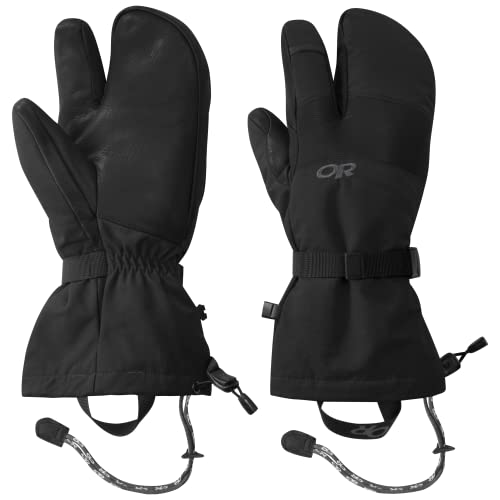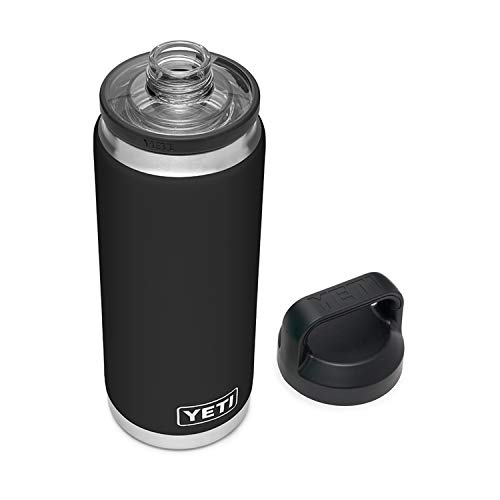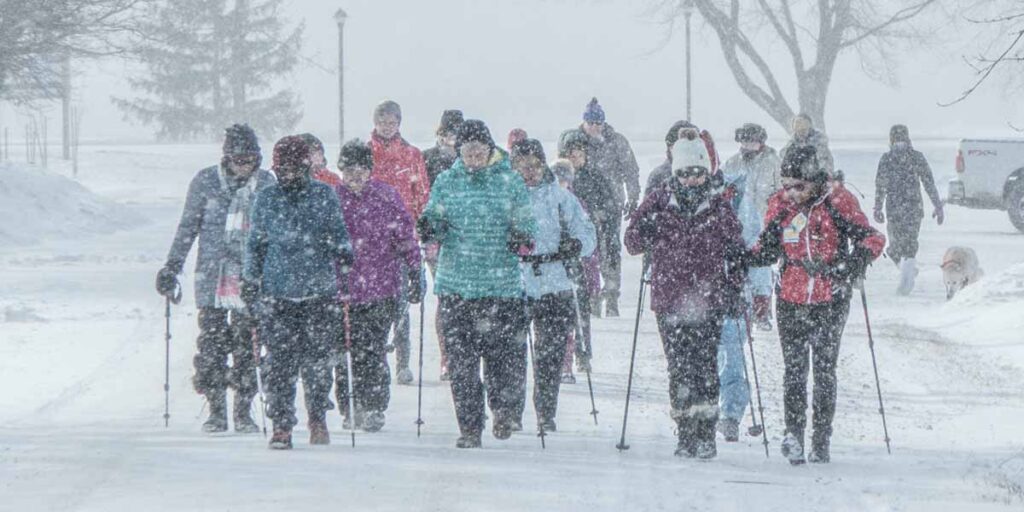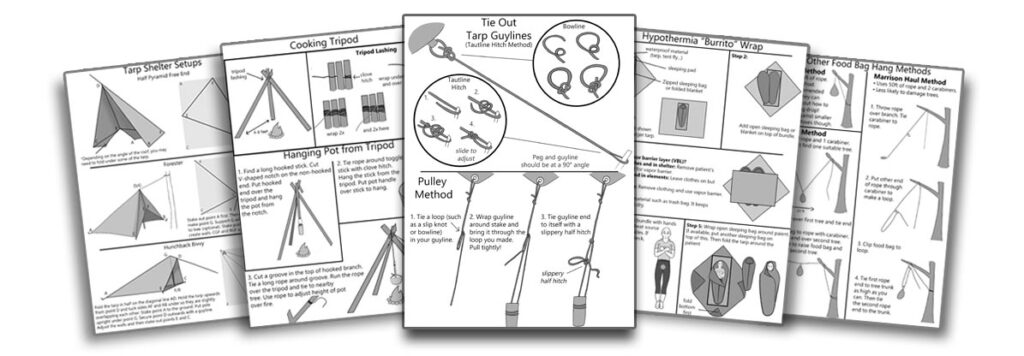There’s a lot to love about hiking in winter, but cold hands is not one of them. Not only can cold hands make your hike miserable, but it can be downright dangerous – such as if you start hiking with your hands in your pockets to warm them up (a fall risk!) or end up with frostbite.
You don’t have to suffer cold hands on winter hikes though. Here’s a practical guide to help you master the science of warm hands when hiking in the extreme cold.
1. Use Mittens, Not Gloves
In really cold temperatures, you will need to use mittens instead of gloves. Mittens are warmer than gloves because they encase all the fingers together, allowing them to share heat. By contrast, gloves isolate each finger. This increases the surface area exposed to cold and heat loss.
The downside of mittens, however, is that they don’t allow you to use your fingers. If you need to do tasks with your hands (such as checking GPS or taking photos), then gloves are the better choice. Or, choose three-finger gloves to get the best of both.

Three finger gloves like these trap heat while still giving you some finger dexterity.
2. Waterproof Is Mandatory
Wet hands are cold hands! And your mittens can easily get wet in cold temperatures, such as when snow falls onto them and melts from your body heat. So absolutely get waterproof mittens for your hike.
3. Layer Your Hands
Just like you need to wear three layers on your body to stay warm, you also need to wear layers on your hands.
These three layers are:
- Liner glove: This is your hands’ base layer. Its purpose is to wick sweat away so your hands stay dry. The liner glove should be made from synthetic material or wool. Avoid cotton gloves!
- Insulation glove/mitt: This is what actually keeps your hands warm. It’s usually made from synthetic insulation or fleece. Wool is also great as it insulates even when wet.
- Waterproof mitt: This is your shell layer. It keeps your insulation layer dry.
It would be really annoying to put three layers on your hands. So, most shell mittens also have an insulation layer. Sometimes the insulation layer is removable, which makes drying mitts easier and also allows for more versatility in wearing.
Also read: Best Insulated Shell Mittens
4. Change Liner Gloves Frequently
Compared to the rest of the body, our hands produce a lot of sweat. The sweat can easily drench your liner gloves, causing the insulation layer to get wet. When this happens, the insulation loses its loft and won’t keep your hands warm. Plus, your hands also lose heat because of evaporation.
To prevent this, bring extra liner gloves and change them frequently. You will need at least one extra pair of liners. If doing intense trekking, snowshoeing or other winter sports, you could easily go through three pairs of liner gloves during the day.
5. Size the Mittens Correctly
Since you will be wearing three layers on your hands(a base, insulation, and shell), you will need the combo to come together perfectly. If the layers are too tight, it will compress the insulation and cut off circulation – meaning your hands get cold. It’s also particularly hard to get cold hands into tight gloves!
6. Consider Your Water Bottle
Most water bottles and thermoses are not glove-friendly, so a lot of people end up removing their mittens to open the bottle. Each time they do this, they lose some heat and risk getting their hands wet.
Instead, get a water bottle or thermos that you can open even with mittens on. Here are some good winter water bottles.

The Yeti Rambler insulated bottle has a mitten-friendly cap and spill-proof spout.
7. Use Latex Gloves as Vapor Barriers
A vapor barrier liner (VBL) is a waterproof material which you wear over your base layer. It prevents your insulation layer from getting wet from sweat.
For your hands, cheap latex gloves work great as a VBL. You just put them over your liner gloves. You’ll still want to change your liner gloves so your hands aren’t swimming in sweat – but your insulation layer stays safe.
8. Attach Idiot Strings
If you lose your mittens, your hands will get cold. So make sure you don’t lose them by putting your mittens on a string (also known as an “idiot string”). As an added benefit, you’ll be able to take your mitts off and just let them dangle until you need to put them back on.
You can also use little clamps like these “Hold ‘em mitts.” Or, choose mittens which have elastic wrist straps.
9. Use Hand Warmers
Don’t try to “tough it out.” The moment your hands start feeling cold, use hand warmer packets to warm them up. If you wait until your hands are freezing, it will be a lot harder to get them warm!
I know they are meant for toddlers, but they are very practical for hiking too. 🙂
10. Cinch the Gauntlets
Good winter mittens have extra-long gauntlets (aka cuffs) with drawstrings. The drawstring allows you to cinch the mittens over your jacket to keep wind and snow out.
If your mittens don’t have long gauntlets, then you’ll need to wear them underneath your jacket. This makes it almost impossible to take your mitts off/on without also removing your jacket though, so it’s better to get mittens with cinchable gauntlets.
11. Insulate Your Core
When your core gets cold, your body starts redirecting blood from your extremities to it as a way of protecting vital organs. This is why your hands and feet get cold faster than other parts of your body. So, by keeping your core warm – such as with a good puffy vest – you can actually help keep your hands warmer too.
Wants tons of camping info in PRINTABLE format? Then get my
Camping Cheat Sheets: An Illustrated Manual
Resources for this article:
https://pubs.usgs.gov/publication/ofr89415,
https://www.sciencedirect.com/science/article/abs/pii/S0003687018303739,
https://citeseerx.ist.psu.edu/document?repid=rep1&type=pdf&doi=8653b6461ab569dd13ccde455be5d01b0d71e712,
https://www.researchgate.net/profile/Ken-Zafren/publication/235123075_The_World_Congress_on_Wilderness_Medicine_2nd_Held_in_Aspen_Colorado_on_8-12_August_1995/links/5593279408ae1e9cb4298dcd/The-World-Congress-on-Wilderness-Medicine-2nd-Held-in-Aspen-Colorado-on-8-12-August-1995.pdf#page=281,
https://books.google.rs/books?hl=en&lr=&id=B429LiEdnhoC&oi=fnd&pg=PP9&dq=winter+hiking+mittens&ots=L1HdHuMc8U&sig=gn9_p2uKDYleeQ4se0Vw1yi_y48&redir_esc=y#v=onepage&q&f=false,
https://books.google.rs/books?hl=en&lr=&id=sWUga1f11fEC&oi=fnd&pg=PA3&dq=winter+hiking+mittens&ots=HE0z1f9_h8&sig=YIWtYC6911_nDjFxA8nB89MSvSM&redir_esc=y#v=onepage&q=winter%20hiking%20mittens&f=false,
image credit: Image credit: “Winter Hike-1030624.jpg” (CC BY-NC 2.0) by Gary Lloyd-Rees














Post your comments